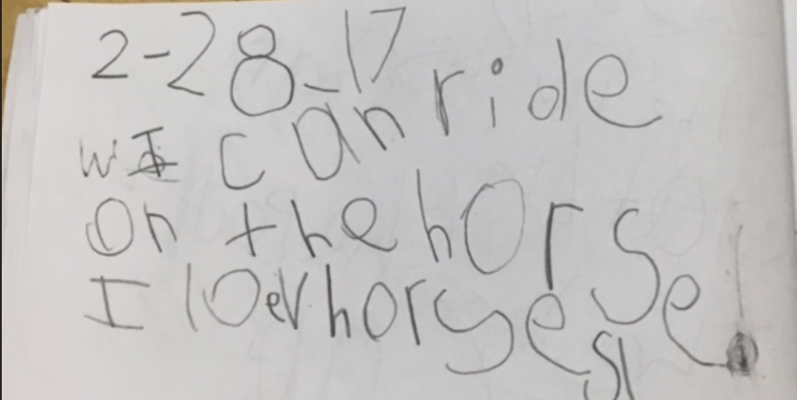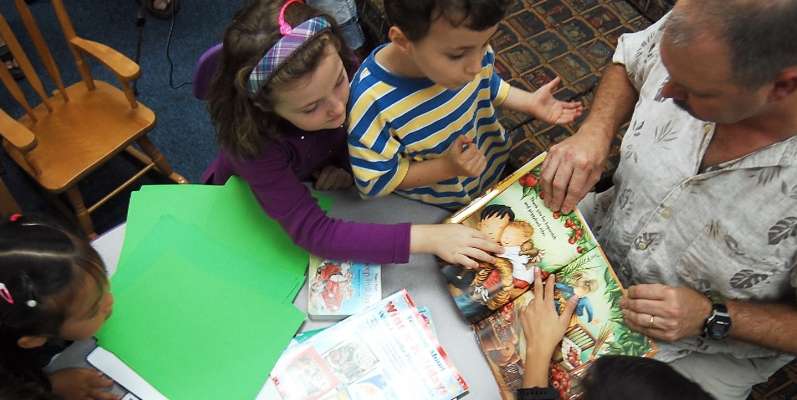I’ve been spending a lot of time supporting teachers on elementary campuses in a nearby district this year. Their ELA coordinator is faithful to remind teachers and coaches each time they meet that the work they do this year is aligned to Fountas and Pinnell’s Responsive Teaching Cycle. The cycle:
- Gather data
- Observe reading behaviors
- Identify emphases for teaching
- Teach for strategic actions
As I meet with PLCs to talk about improving student learning, we start with a quick reminder of the Responsive Teaching Cycle so it guides our discussions around celebrations and the “tricky bits” over which teachers agonize. We take the opportunity to share ways in which students are growing as readers as well as the things that are a concern about instruction and learning.
The Benchmark Assessment System is the reading assessment tool used by teachers on elementary campuses and we have plenty of data to use when we meet. I also encourage teachers to bring students’ writing about reading and any other formative assessments they’ve collected. This includes data collected using communication and writing rubrics.
Kids should be talking (a lot) and writing (a lot) about what they read and how they’re thinking about their reading. It’s the thinking I’m most interested in when I ask teachers for information from formative assessments.
Recently, in a PLC with third grade teachers, they expressed concern about the ability of their students to understand procedural text. We collaborated together to form an understanding of the type of thinking students needed to engage in as they read procedural text.
One of the teachers shared, “It’s as if they have to put themselves in the place of a person ‘doing the thing’ described in the steps in a procedural text.”
Those of us around the table agreed. “What do we do to teach and model that kind of thinking?” I asked. “And then what will kids do to practice the type of thinking that allows them to proficiently complete the task.”
We came up with the idea that kids need practice following the steps in a procedural text in the same way we approach that genre as adult readers. In our daily lives we (adult proficient readers) read procedural for the purpose of completing a task. That’s precisely what needed to be modeled for kids across the upcoming unit.
The third grade teachers planned a two week multi-genre unit that included several procedural texts. The teachers discussed how they’d need to teach features of procedural text and then model their own thinking as they worked to complete the steps in the process outlined in the selection.
The first opportunity they planned for their students to explore this genre and practice on their own included kids viewing a how-to segment on the Spatulatta website. Students would view the short video on creating a centerpiece out of strawberries and celery leaves.
The assignment was for kids to view, read the steps in the process and create the centerpiece. The follow-up performance task to check on transfer of understanding was for kids to write the steps in making a butter and jelly sandwich and then demonstrating the process on Flipgrid just as they’d seen on the Spatulatta video.
Additional practice reading and understanding procedural text included students creating Candy Bar Party Pups. Teachers provided the supplies and students completed the task by reading the steps, viewing the short video and creating the candy bar treats.

During the planning process, we created open-ended questions for kids to discuss (and answer in writing) so that we were able to understand their depth of thinking and ability to comprehend. Questions included:
- Explain why the blogger included a list of items at the beginning of the blog post.
- According to the information in Candy Bar Party Pups, what should the reader do right after making the dog heads?
- Talk with your discussion partner about why the blogger included the second sentence in step 5. Include several ideas about why it was important for the reader to know that the party pups can be stored at room temperature for 3-5 days.
It was a powerful process listening to these third grade teachers talk about their concern for kids not comprehending procedural text well and then collaborating with them to plan instruction and practice for their students– the Responsive Teaching Cycle in action.
Reflecting on formative assessment data led teachers to understanding student needs. That in turn led to identifying reader tasks required for thinking that facilitates comprehension. And that led teachers to planning authentic reading, thinking and creative action that led students to transfer of knowledge.
The engaging videos and relevant content of the procedural texts kids were assigned to read guaranteed a memorable learning experience.
All this–compelling testimonial for the power of the Responsive Teaching Cycle.












Wow! What lucky teachers! Responsive teaching requires Time, Talk, and Thoughtfulness! 🙂
It does!